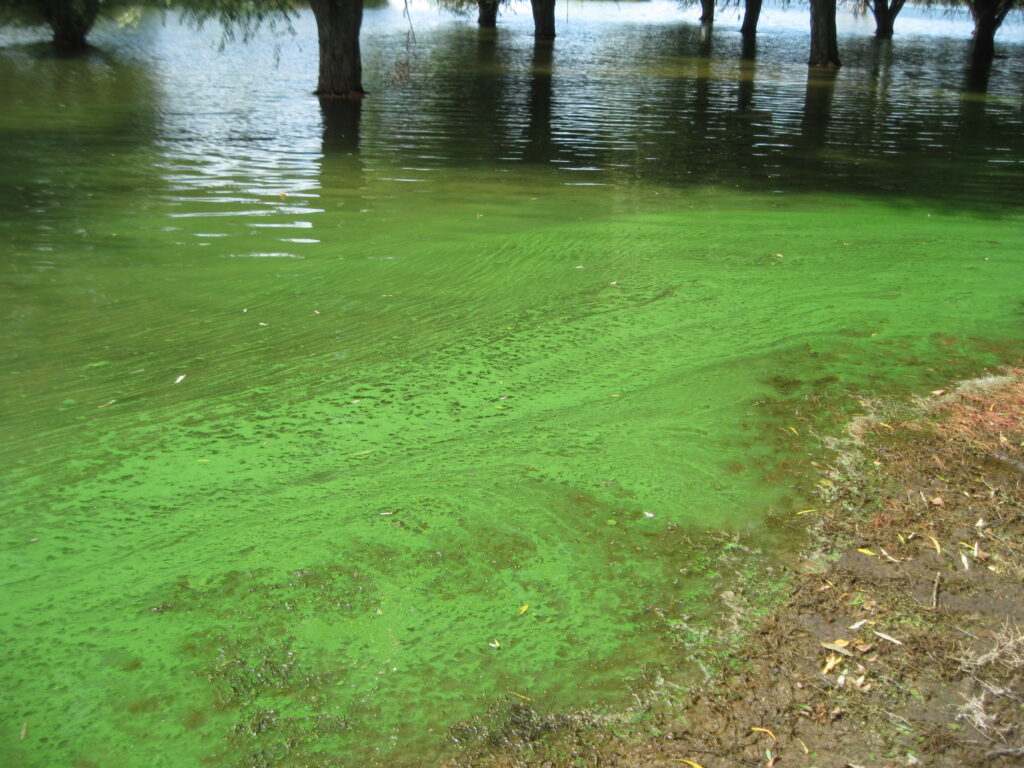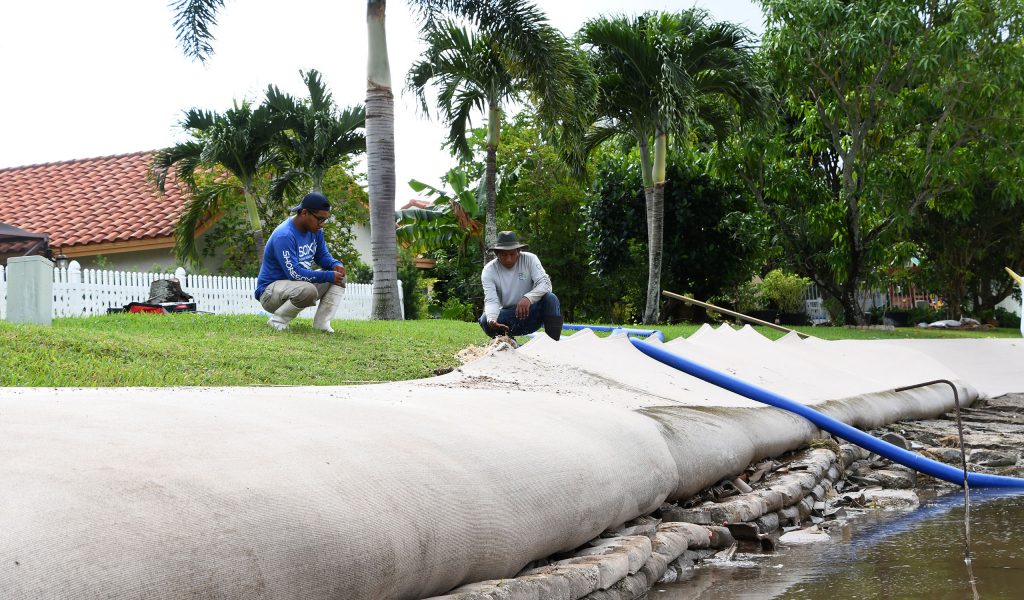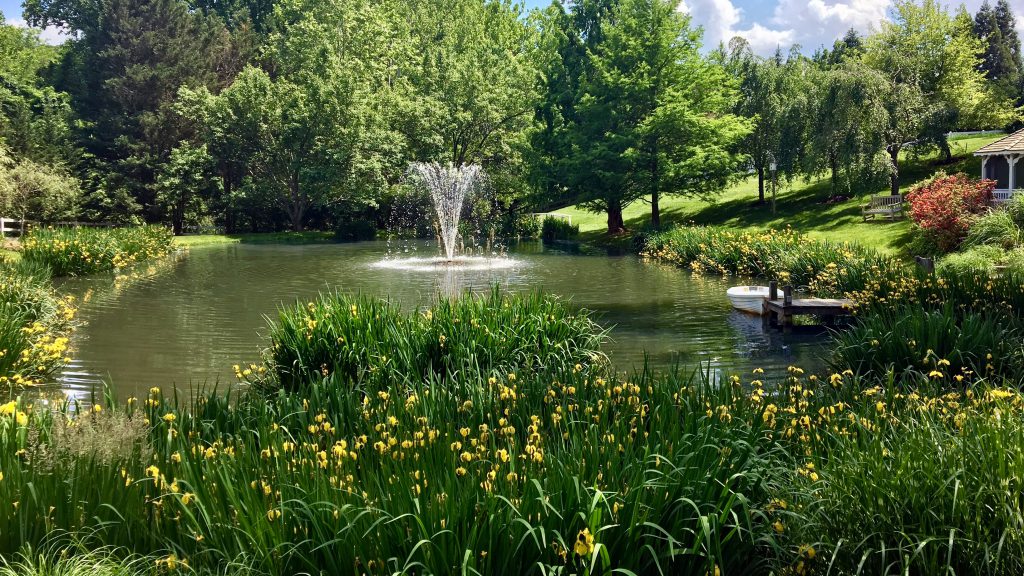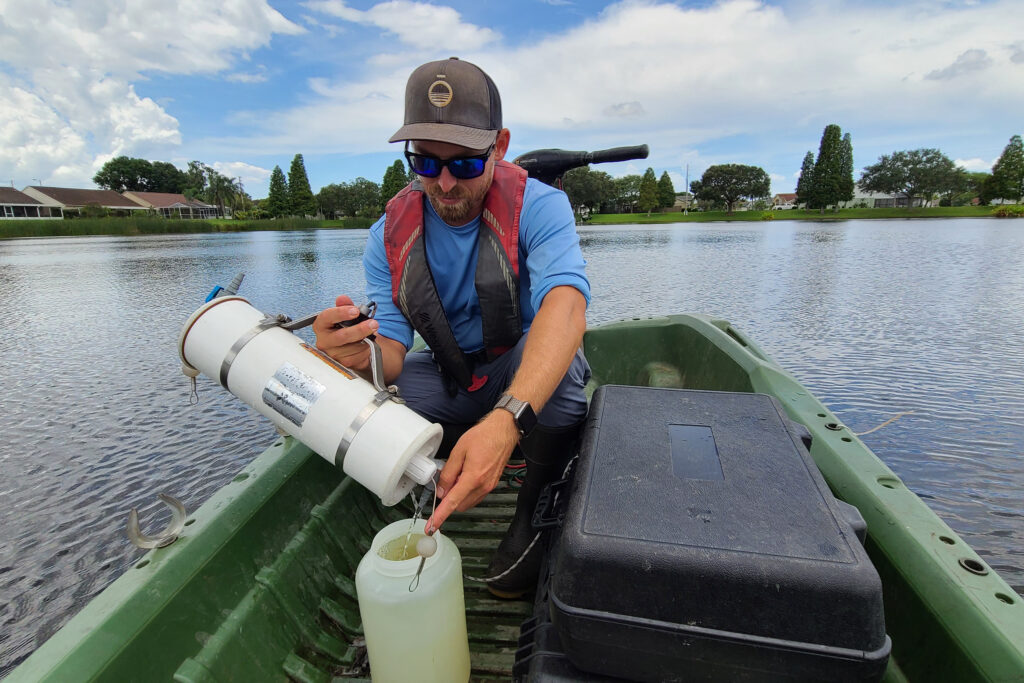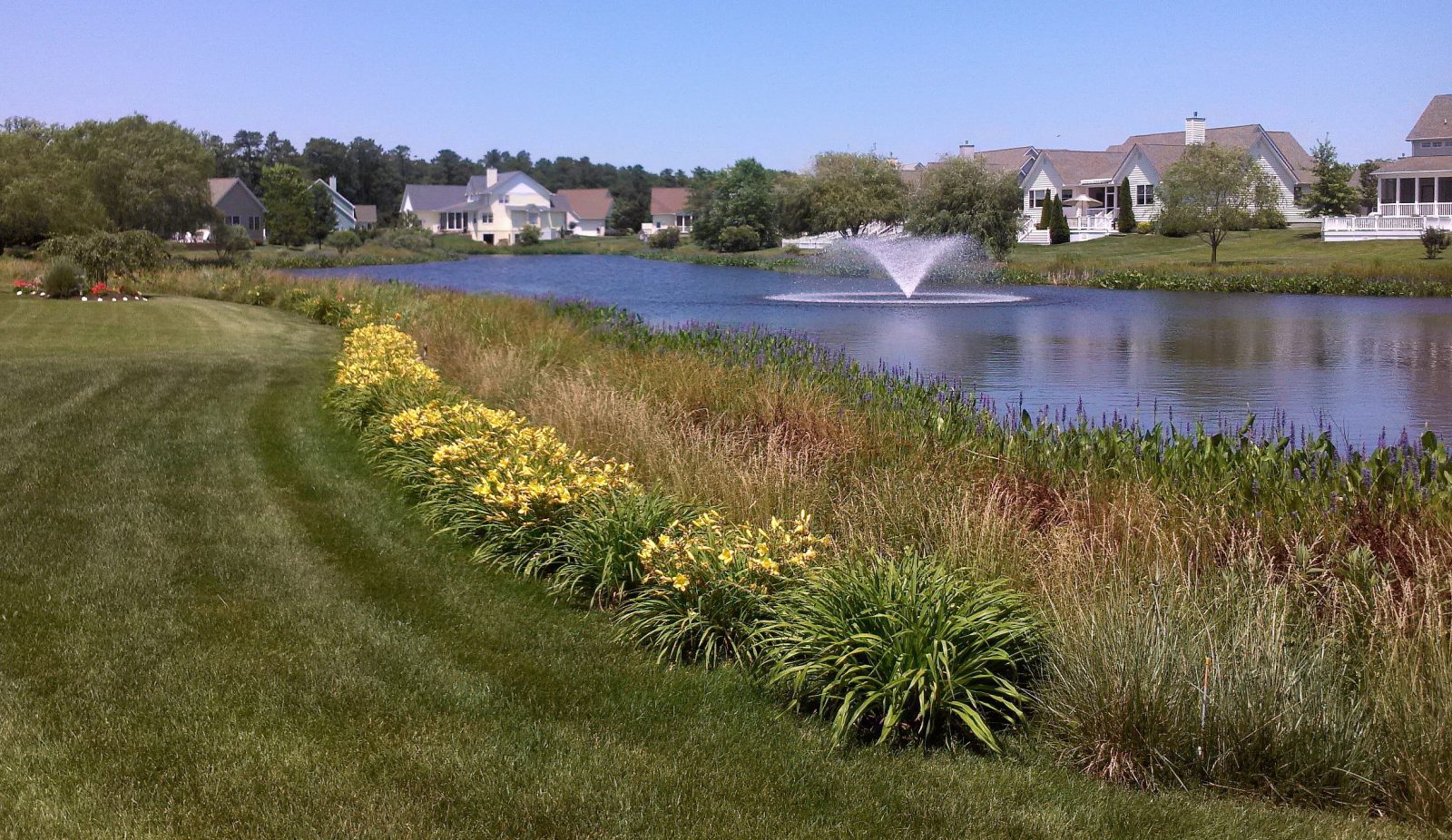
Why your pond shoreline may need more attention as the climate changes
If you’ve owned or managed a lake or pond for a long time, you may have noticed the shoreline looks different than when you first took on the responsibility. Like the water itself, pond shorelines evolve and may deteriorate over time. While weather has always played a role in shoreline erosion, climate change may be contributing to unprecedented rates of degradation. Understanding how the effects of climate change impact your lake or pond shoreline is essential when planning your ongoing pond maintenance strategies.
As climate change intensifies, the effects on your waterbody and your budget become harder to ignore. Pond shoreline erosion can contribute to:
- Muck build-up, loss of depth, and dangerous flooding
- Unpleasant odors and turbidity (cloudiness)
- Falls and safety hazards
- Stormwater equipment damage
- Loss of waterfront property
- Reduced property value
EXTREME WEATHER
One of the most prominent effects of climate change is the increase in extreme weather events. Heavy rainstorms, hurricanes, tornados, and even severe winter storms are occurring more frequently and with greater intensity. The more severe the weather, the faster shorelines can deteriorate, making it essential to incorporate pond shoreline stabilization into your management approach.
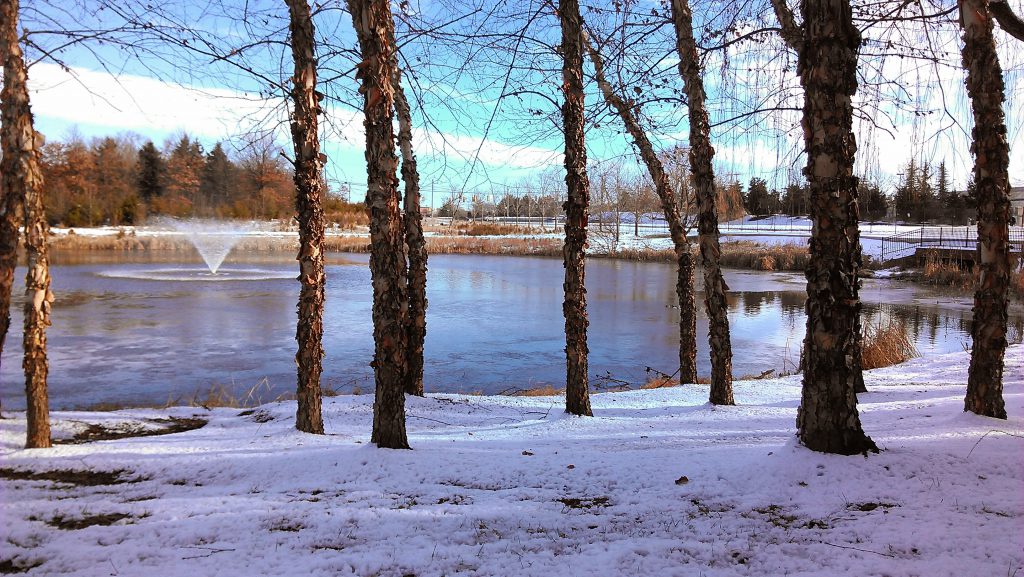
Colder, more severe winters
Winters are becoming more severe across the country, with states such as Texas and Louisiana experiencing unprecedented freezing temperatures. Freezing ice storms can cause significant damage to shorelines. When ice forms along the edges of lakes and ponds, it expands and creates pressure on the surrounding sediment. As the ice melts, the shoreline can destabilize, increasing the likelihood of collapse or crumbling. This type of freeze-thaw cycle has become more frequent, leaving shorelines more vulnerable with each passing year.
Hotter, dryer summers
Hot summers are escalating nationwide, but Northern states have experienced some of the most pronounced changes. The growing season is starting earlier and lasting longer, extending the window for nuisance weeds, algae, and toxic cyanobacteria to proliferate. In addition to these biological shifts, hotter summers lead to greater water evaporation, leaving more shoreline exposed. This newly uncovered ground is often less stable, making it more susceptible to erosion.
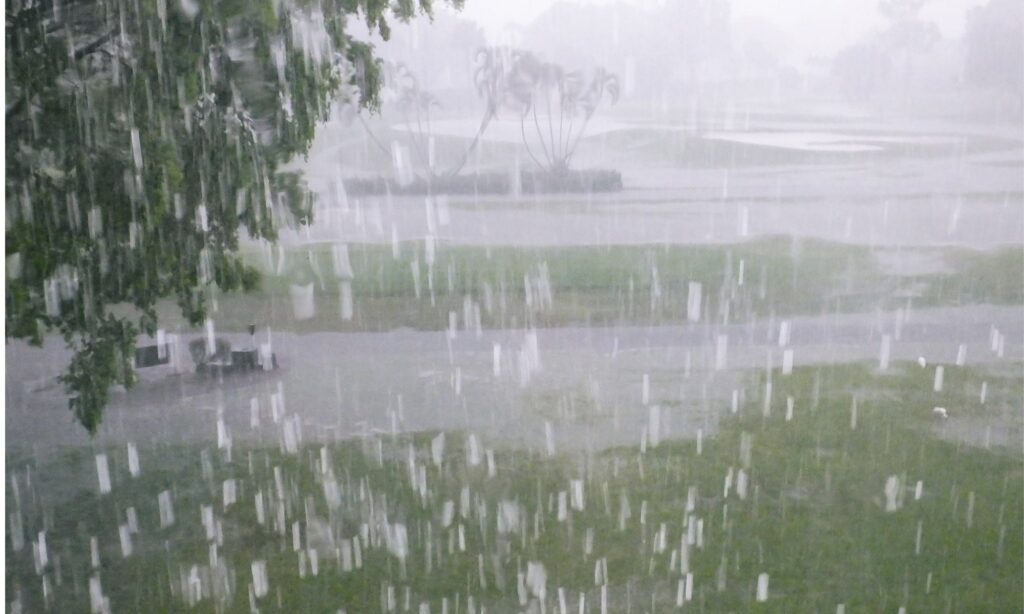
Sporadic and intense rainfall
While periods of drought are becoming more common, when it does rain, the storms tend to be much more intense. Torrential downpours can cause large volumes of water to cascade over shorelines in a short amount of time, increasing the risk of flooding and exacerbating erosion. If your waterbody has experienced lower-than-normal water levels, one heavy rainstorm can cause significant shoreline collapse. Likewise, sudden water level changes during hurricanes and tropical storms can trigger powerful wave action, capable of washing away large stretches of shoreline.
URBAN DEVELOPMENT
The continual rise of urban development further amplifies these effects. As natural land is replaced by concrete and asphalt, there are fewer places for stormwater to soak into the ground. Instead, rainwater is funneled across impervious surfaces toward lakes and ponds, overwhelming the shorelines with fast-moving water. Poor agricultural practices and construction projects can also strip away the natural vegetation that would normally protect shorelines from erosion.
INVASIVE SPECIES
Climate change is driving animals to new areas, especially tropical and subtropical species. Some of these species are known to impact your shoreline. Hotter summer temperatures are making new areas more hospitable to them. More severe hurricanes can transport invasive species further from their existing habitat. Hurricanes are more likely to form and be more destructive when the ocean is warmer because heat provides energy to hurricanes; the hot air can hold more moisture than cooler air.
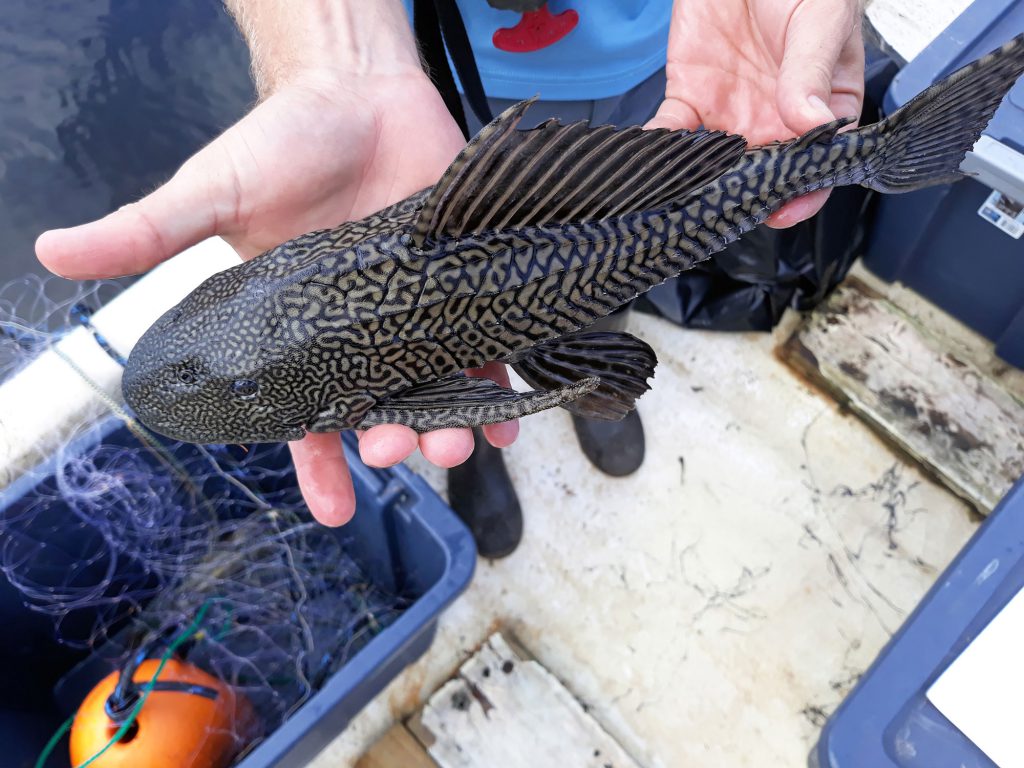
Invasive tropical armored catfish for example, once contained to just South Florida since the 1950s, have continued to spread across the state of the years. They have also been reported in North Carolina, Texas, Arizona, Nevada, and California – likely transported via the aquarium trade. These fish burrow into shorelines, destabilizing the soil and increasing the risk of sinkholes and shoreline collapse. Removing these invasive fish is a costly and labor-intensive process, often requiring electrofishing or manual removal—projects that can cost upwards of $100,000. Invasive plants, such as purple loosestrife and Phragmites, also contribute to erosion by crowding out native vegetation that stabilizes shorelines.
How to Protect Your Shoreline from Damage
The effects of climate change on your waterbody cannot be underestimated. To protect your shoreline, it’s crucial to develop adaptive management strategies that account for these evolving environmental conditions.
Pond shoreline restoration
The most important step is to repair any shoreline areas that are damaged. A bioengineered shoreline is one of the most reliable and long-lasting strategies available. A bioengineered system utilizes knit, mesh materials that are anchored to the stable part of the shoreline and filled with organic material like sand, or in some cases, the sediment that has already eroded into the water. Once filled, the material is shaped to the ideal slope and shape, and then secured to the land around the perimeter, creating a strong anchor that can hold the shoreline in place for many years. This pond shoreline restoration solution can be customized to match the aesthetic of your property by incorporating native vegetation or sod, blending seamlessly into the landscape.
Pond Shoreline Plants
Cultivating a robust buffer of pond shoreline plants is also essential to protect your shoreline. Plants native to the particular region are carefully selected to grow into a 3-5 foot buffer around the perimeter of the water. The plants develop deep root systems that hold the soil in place, and the plants create a wall that helps slow stormwater runoff as it flows into the water, limiting the deterioration of the shoreline. Furthermore, buffers of pond shoreline plants can help deter nuisance animals and people from venturing too close to the water’s edge, preventing erosion and helping to prevent safety hazards.
Fountains and aeration
Fountains, surface aerators, and submersed aerators are excellent choices in the winter, in most regions, to prevent ice formation and help prevent freezing around the shoreline. In the summer, this equipment can help break up stagnant water and create healthier, safer conditions for native fish and beneficial biological bacteria that help facilitate the decomposition of bottom muck and organic materials.
Hydro-raking
Likewise, hydro-raking may help restore some depth and volume to the waterbody, which may help counteract the effects of hot summer temperatures on evaporation and prolong the health and depth of the waterbody, even when erosion does occur and accumulate at the bottom.
Water quality testing and visual assessments
Regularly monitoring for invasive species and nuisance vegetation is critical to maintaining shoreline health. Water quality testing can help detect shifts in nutrient levels that may signal an impending weed overgrowth, allowing for timely intervention.
Protect Your Waterbody from Major Weather Events
Ultimately, the signs of climate change are all around us and it’s important to get ahead of the potential problems that are on the rise. Whether your waterbody is in ideal condition or already experiencing erosion problems, it’s important to embrace a proactive management approach—and be flexible when evaluating the long-term goals of your management program to ensure it’s as resilient as possible to the effects of climate change.
Explore Shoreline Erosion Management
Contact Us for Pond Shoreline Management
Call us at 888-480-5253 or complete the form below to connect with an aquatic management expert.
SOLitude Lake Management is a nationwide environmental firm committed to providing sustainable solutions that improve water quality, enhance beauty and preserve natural resources.
SOLitude’s team of aquatic scientists specializes in the development and execution of customized lake, stormwater pond, wetland and fisheries management programs. Services include water quality testing and restoration, algae and aquatic weed control, installation and maintenance of fountains and aeration systems, shoreline erosion control, muck and sediment removal and invasive species management. SOLitude partners with homeowners associations, golf courses, private landowners, businesses and municipalities. SOLitude Lake Management is part of Rentokil, a leading business services company, operating across the United States, Canada and Puerto Rico.
For more information, visit SOLitude Lake Management at solitudelakemanagement.com, and connect on Facebook, LinkedIn, Twitter, Instagram and YouTube.








